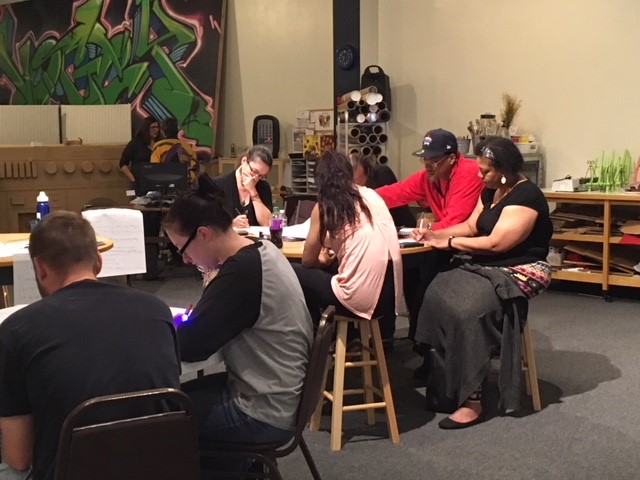I deployed to Afghanistan for the entirety of my 23rd year of life. Every solitary day, I wore the dim muddled grey-green combat uniform as I trudged to work at my fuel point in a remote FOB in the Paktika Province. As a young woman, I dreamed of dresses in the depths of dust kicked up by military vehicles that passed me. Somewhere, I heard, perhaps hearsay, that for uniforms to live up to army standards, they should only be worn for six months before they should be retired from use. To be safe, I retired all four of my uniforms from Afghanistan when I returned home. I couldn’t bear to throw them away, so I lovingly tucked them in an antique box, perhaps a metaphor for repression.
Then one evening, years later, passing as they had quickly in an interval I was invited by my friend, a brilliant music therapist, to attend a session called Combat Paper. Their mission is to transform old military uniforms into handmade paper, a process as old as Egyptian pharaohs. The first step is to cut the uniform into strips of tiny ribbons. I remember looking at the pile on the table heaps of uniform some slightly discolored blended together. My friend handed me a pair of scissors, and asked me, “Does it feel as if you are violating something sacred by cutting this up?” I grabbed an old frayed uniform, and began snipping at it slowly rolling her question around my lips. I couldn’t answer, so I just smiled and nodded, chatting the way one does with a close friend.
After the uniform is torn into strips, it is beaten into a pulp by a machine called a Hollander Beater. I watched transfixed as the machine efficiently translated an entire year of myself into a watered mess. This grey water is in reality a rendered pulp that is shaken out sheet by sheet. I grabbed a screen, and watched as the facilitator helped me to move my hands precisely to agitate the pulp until it settles into a smooth piece of paper. After it dries, one is able to create unique artwork with beautiful dyes, my favorite being dog tags splayed against a burnt city landscape. I created several pieces of art, and then my friend asked me if I wanted to write about it under the guidance of Poetry Heals. I wasn’t sure if I wanted to process what happened.
I approached the poetry corner of the room, and was immediately greeted by Poetry Heals. Calmly and with extreme consideration, the leader of the poetry workshop gave us an exercise to describe through the senses this process of transformation from uniform to pulp to paper to art. Hesitantly, my pen lingered above the paper, I whispered, “I don’t understand, but this experience felt emotionally challenging for me; I almost feel like crying.” Without judgment, the facilitator met my eyes, and said with firm compassion, “It is supposed to be hard.” She gave me permission to process the complexities of turning an experience of loss–the passage of youth, experiences from a war zone, mortars and guns and violence–into color and print immortalized.
The words came easy dripping off ink. She witnessed them. Poetry Heals heard them and shared my discomfort in a space. I didn’t know how glorious it felt to be understood outside of a rank, a DOD ID number; she listened to me and aided me in finding the words, glimpses into processing an attack on my best friend’s convoy through the mountains, on the guilt of taking a helicopter instead of a vehicle that was hit with an RPG, of the putrid smells from the burn pit, and the laughter of my friends as I served them tea in my shack of a room that felt like a magical cupboard. For war is many things, as is tearing up a uniform into paper. I may never be able to answer my friend’s question, but perhaps the papers of created art and poetry exercises create bridges of words.

